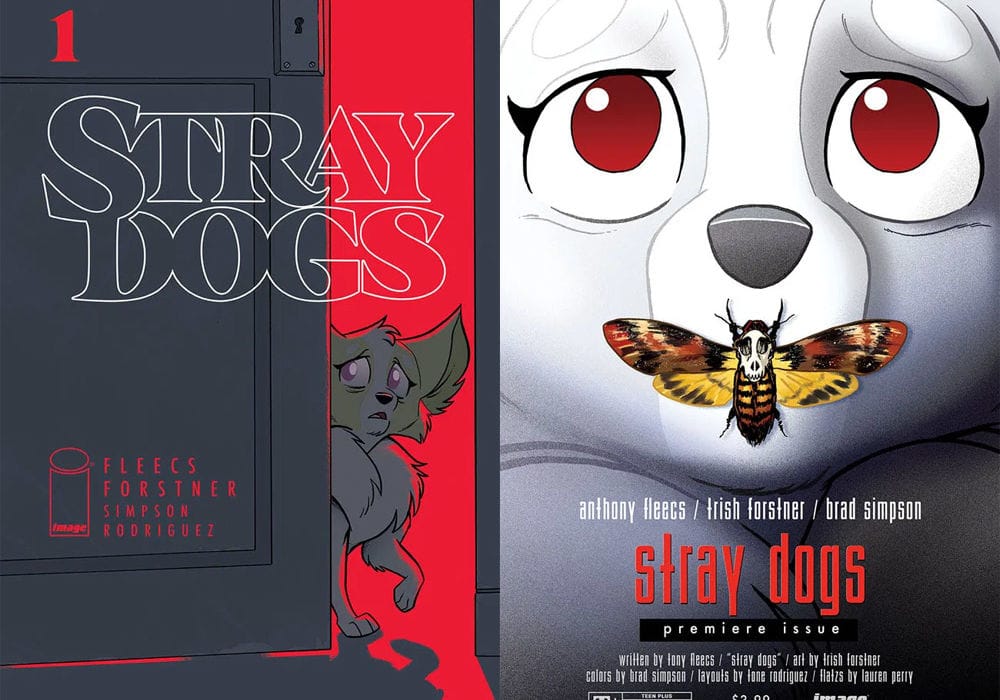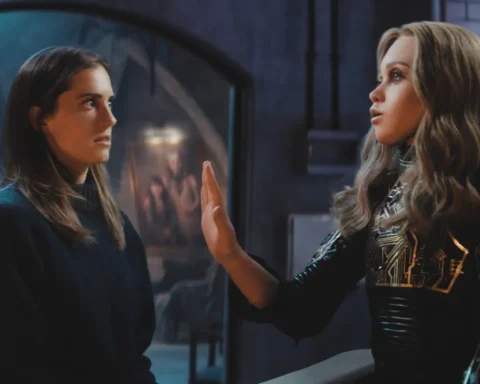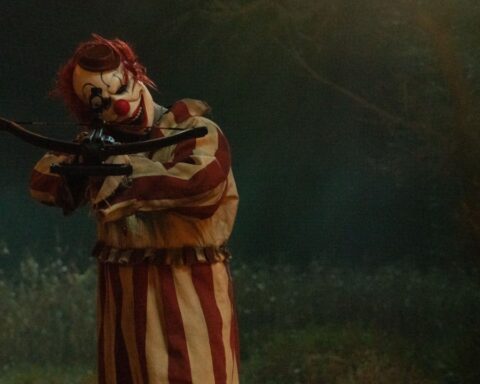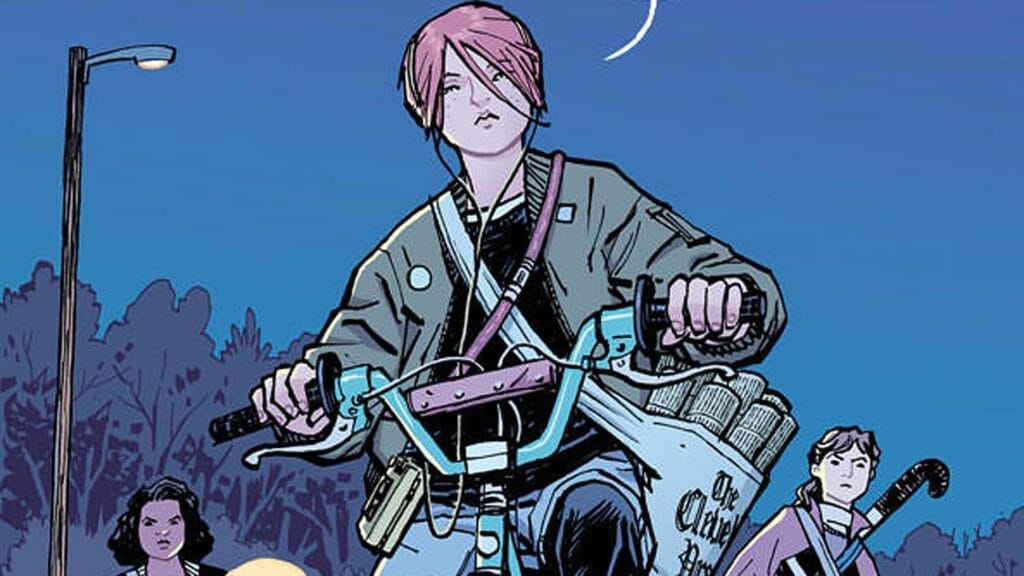“Stray Dogs,” created by writer Tony Fleecs and artist Trish Forstner, is a unique comic book series that skillfully blends genres in a way that feels both familiar and entirely fresh. First published by Image Comics in 2021, the five-issue miniseries quickly captured the attention of comic book fans and critics alike, thanks to its innovative mix of horror, mystery, and dark comedy, all wrapped in the visual style of a Don Bluth-animated film.
At its core, “Stray Dogs” tells the story of a group of dogs who find themselves in a strange house, all with fuzzy memories of how they arrived there. The protagonist, Sophie, a small and nervous dog, slowly begins to remember that her owner was murdered, and the man who now cares for her and the other dogs is the killer. The dogs, who communicate with each other and think like humans, must work together to uncover the truth and escape their captor.
The story unfolds as a psychological thriller with a distinct horror flavor, all seen through the innocent eyes of the canine characters. The tension builds as the dogs piece together the dark reality of their situation, leading to a climactic and emotional conclusion that ties together the various threads of the narrative.



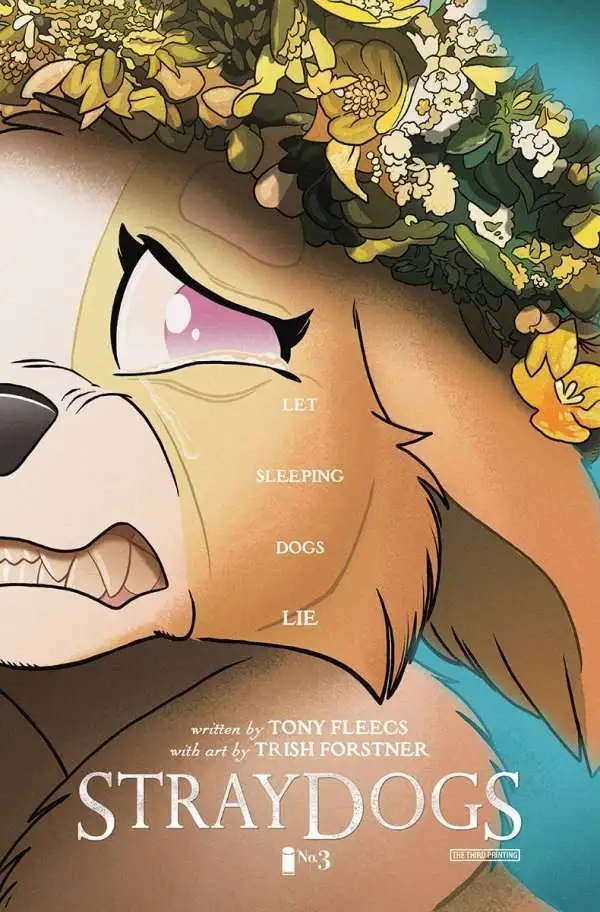
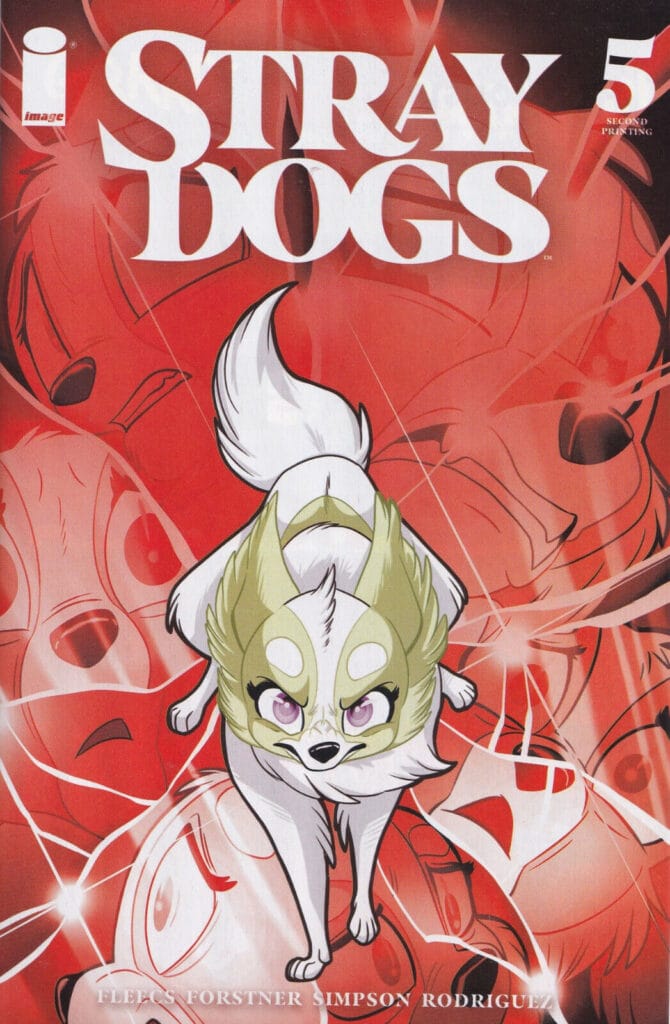
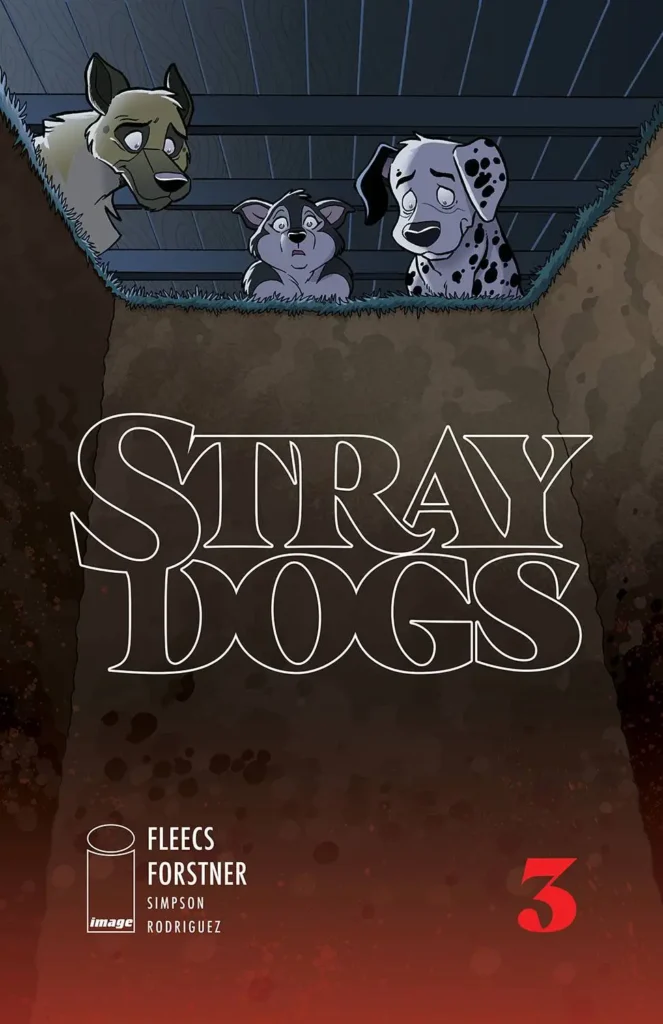
Art Style and Visuals
One of the most striking aspects of “Stray Dogs” is its art style. Trish Forstner’s illustrations are heavily inspired by the classic animated films of Don Bluth, such as “The Secret of NIMH” and “All Dogs Go to Heaven.” The characters are drawn in a soft, expressive style that feels nostalgic, invoking the look and feel of 1980s and 1990s animated movies.
This visual approach serves as a brilliant counterpoint to the dark and unsettling story. The juxtaposition of the cute, almost Disney-like artwork with the horror-thriller plot creates a sense of unease that permeates the entire series. The bright, colorful panels lull the reader into a false sense of security, only to be jarred by moments of sudden violence or shocking revelations. This contrast is one of the series’ greatest strengths, making the horror elements more impactful.
Character Development
Despite the limited number of issues, “Stray Dogs” manages to deliver well-rounded and relatable characters. Each dog in the story has a distinct personality, shaped by their breed and past experiences with their former owners. Sophie, the main character, is portrayed as timid and frightened, but her courage grows as the story progresses. The other dogs, including the brave Rusty, the loyal Victor, and the quirky Earl, all contribute to the story in meaningful ways.
The emotional depth given to these characters is impressive, especially considering they are all non-human protagonists. Their bonds with each other and the memories of their owners are explored in a way that feels authentic and deeply touching. The series cleverly uses these emotional connections to heighten the tension and stakes, making the reader care about the fate of each dog.
Themes and Symbolism
“Stray Dogs” explores several themes, most notably the ideas of memory, trauma, and survival. The fragmented memories of the dogs symbolize the confusion and denial often experienced by victims of trauma. The way the dogs slowly piece together their pasts mirrors the process of recovering repressed memories, with all the associated pain and fear.
The series also delves into the theme of loyalty, both to the dogs’ former owners and to each other. This loyalty drives the narrative and provides the emotional core of the story. The dogs’ determination to remember and to protect each other adds a layer of heroism to their characters, making their struggle against the human villain even more compelling.
Moreover, the series uses its horror elements to comment on the nature of evil and the hidden dangers that can lurk behind a benign exterior. The villain in “Stray Dogs” appears as a kind, caring owner, which makes the revelation of his true nature all the more chilling. This serves as a metaphor for the real-world monsters who can hide behind masks of normalcy.
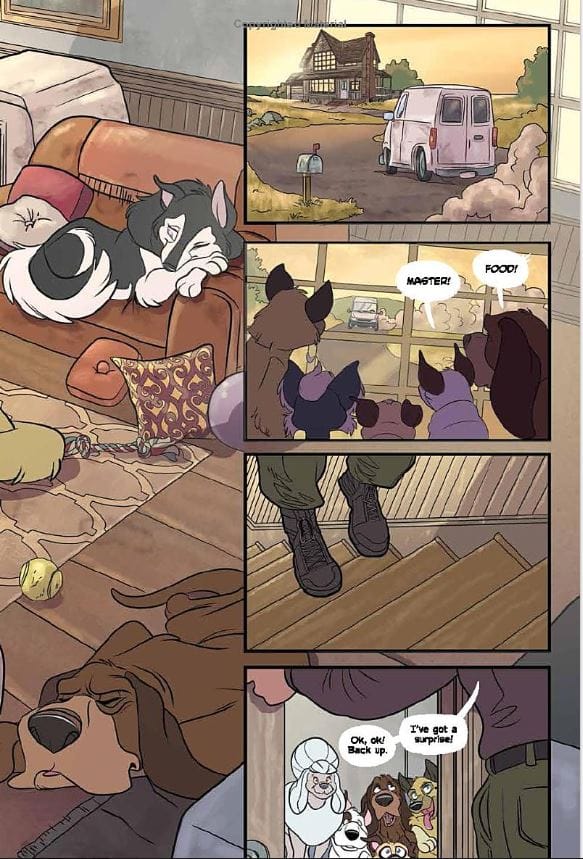
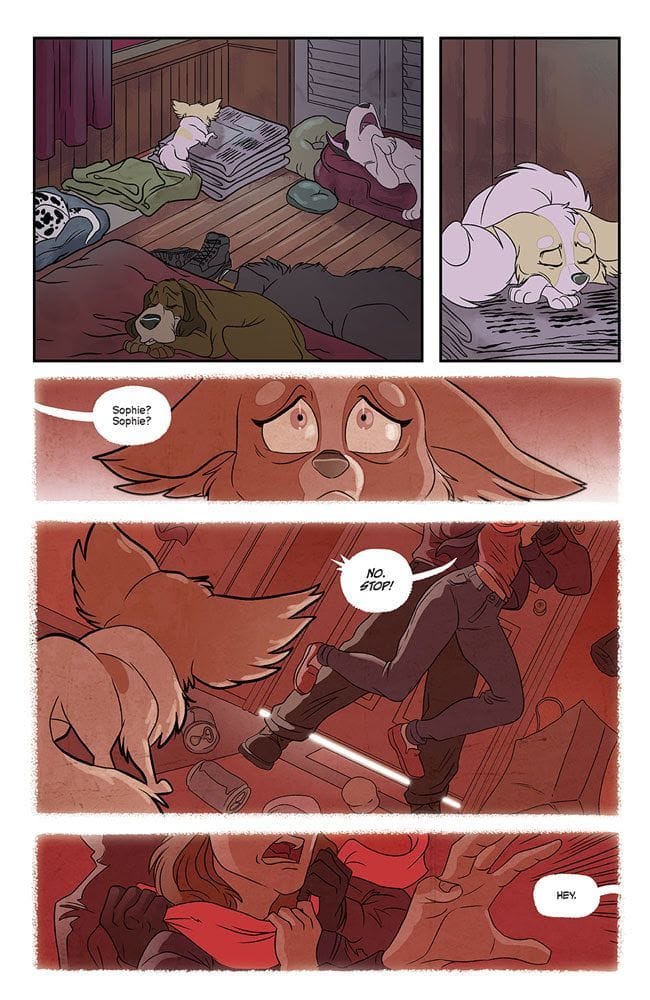
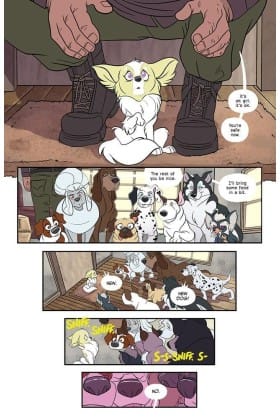
Pacing and Storytelling
The pacing of “Stray Dogs” is another aspect where the series excels. The story is tightly plotted, with each issue building upon the last in a way that maintains suspense and keeps the reader engaged. The gradual revelation of the mystery is handled with skill, with just enough clues and red herrings to keep the reader guessing without ever feeling lost.
The structure of the series, with its focus on the perspectives of the different dogs, allows for a multi-faceted exploration of the story’s central mystery. The narrative is linear, but the use of flashbacks and memory sequences adds depth and complexity to the plot. The series manages to balance moments of tension with brief interludes of humor and warmth, which makes the darker moments even more impactful.
Impact and Reception
“Stray Dogs” received widespread acclaim upon its release, with many praising its originality and the way it subverted expectations. It was lauded for its ability to mix genres, creating a story that is both heartwarming and horrifying. The series also garnered attention for its art style, which stood out in the crowded comic book market.
Critics and readers alike were drawn to the emotional weight of the story, with many finding the ending particularly powerful. The series has been compared to both “Silence of the Lambs” and “All Dogs Go to Heaven,” a testament to its unique blend of influences and its ability to stand out as something truly different.
A Unique Comic Book Series
“Stray Dogs” is a standout comic book series that defies easy categorization. Its success lies in its ability to combine the innocent charm of a nostalgic art style with the gripping tension of a psychological thriller. The series is both a tribute to classic animation and a bold, innovative work in its own right.
With its well-developed characters, emotionally resonant themes, and masterful storytelling, “Stray Dogs” is a must-read for comic book fans, especially those who appreciate genre-blending and stories that offer something beyond the ordinary. It’s a series that lingers in the mind long after the final page is turned, much like the haunting memories of its canine protagonists.
